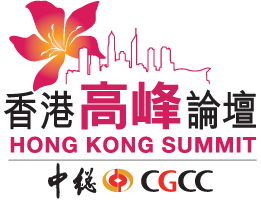
CGCC’s Hong Kong summit accelerates Hong Kong-East Asia cooperation
 More
More
Hong Kong — The benefits of working ever closer together were clearly spelled out at the recent Chinese General Chamber of Commerce’s (CGCC) Hong Kong Summit to Explore Regional Cooperation between Hong Kong and East Asia, jointly organized with the China Council for the Promotion of International Trade (CCPIT) and held at the Hong Kong Convention & Exhibition Centre.
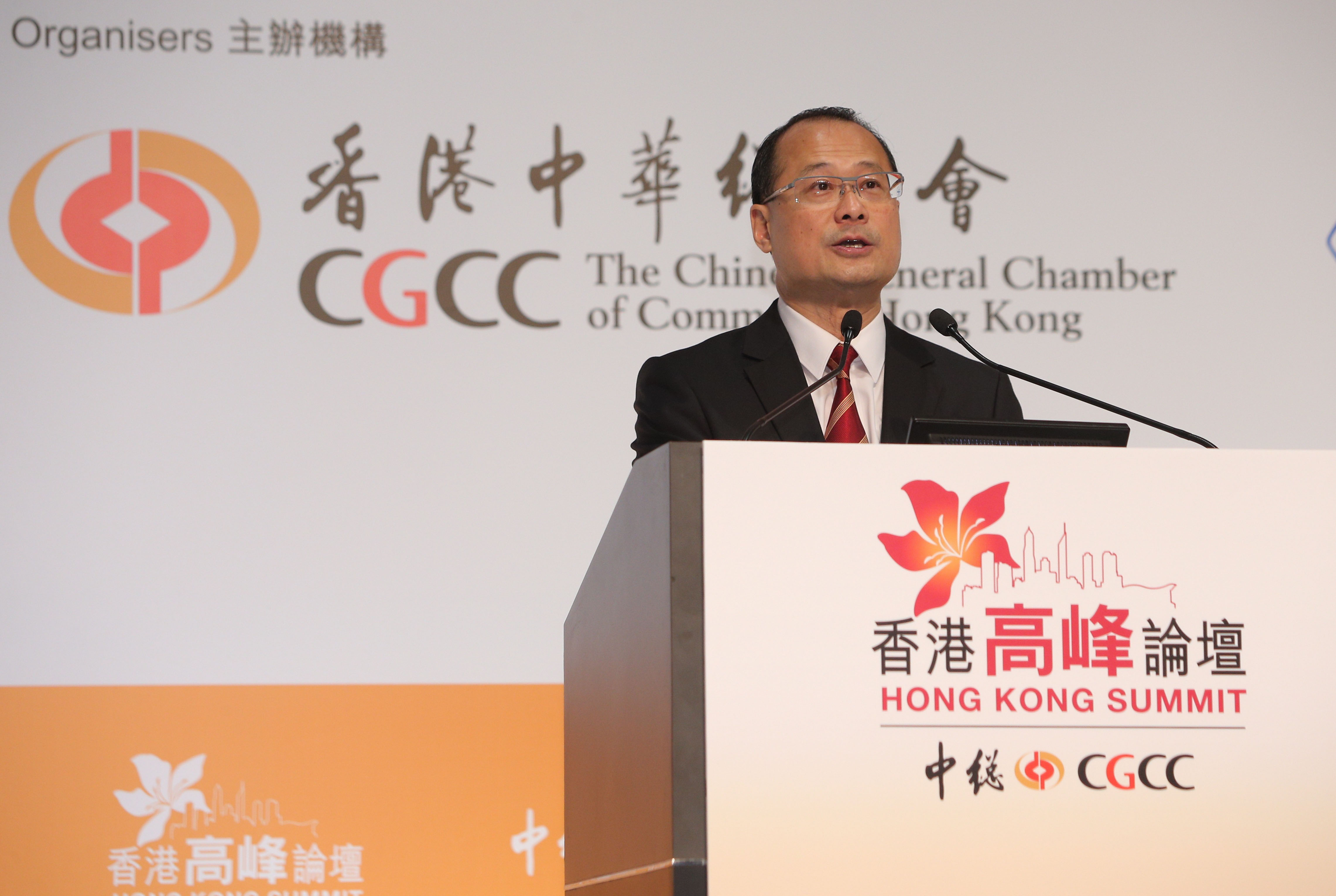
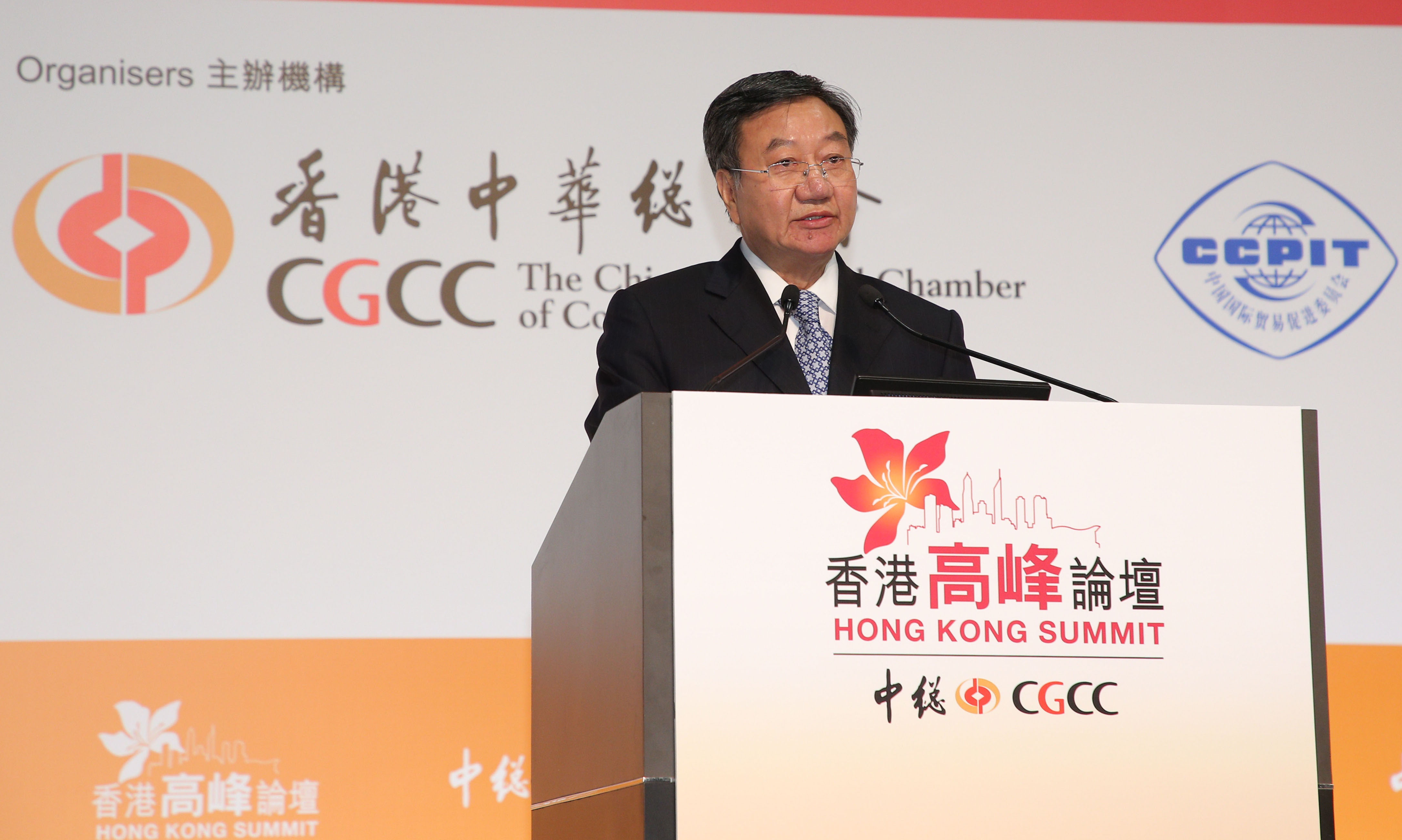
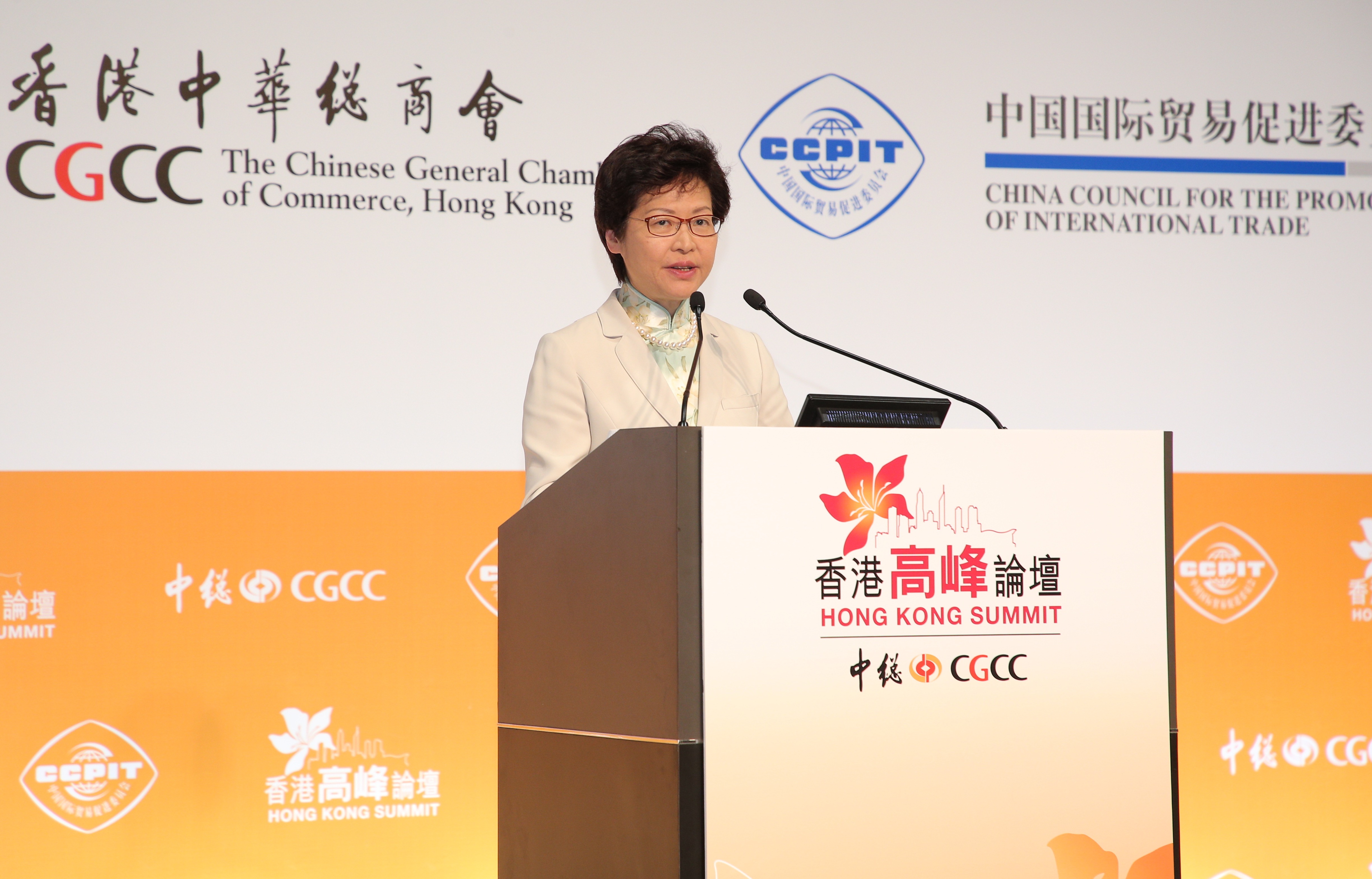
This was the third such get-together since the summit was launched in 2010. It was officiated by Hong Kong SAR Chief Executive Carrie Lam, Yiu Xiaojing, Deputy Director of the Liaison Office of the Central People’s Government in the Hong Kong, and Commissioner Xie Feng of the PRC’s Ministry of Foreign Affairs in Hong Kong. It was timed to form part of the 20th-anniversary celebration of Hong Kong’s reunification with the Mainland.
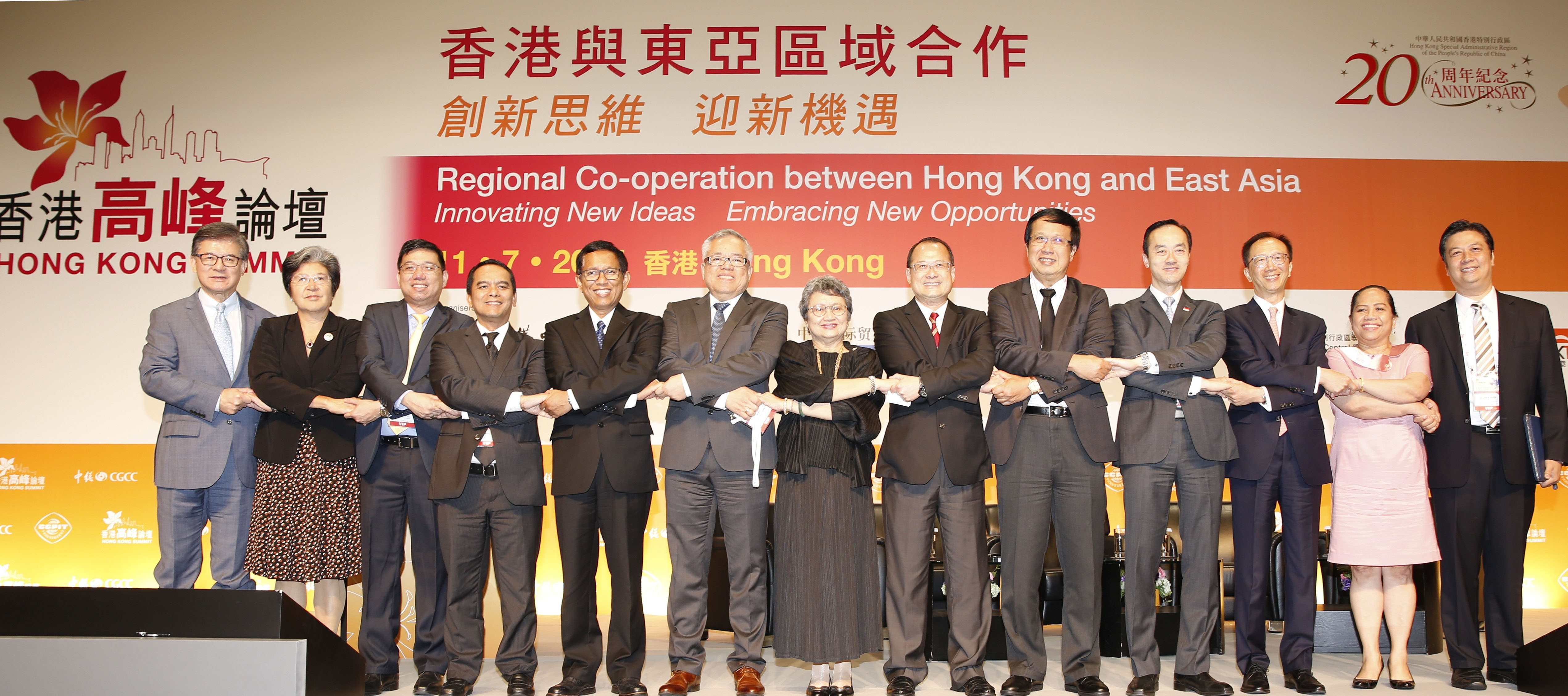
Senior officials, leading business figures and experts and academics from East Asian countries delivered speeches and engaged in dialogue with more than 800 guests. Prospects are bright for all concerned in this regional effort to forge closer ties — and Hong Kong has a pivotal role to play.
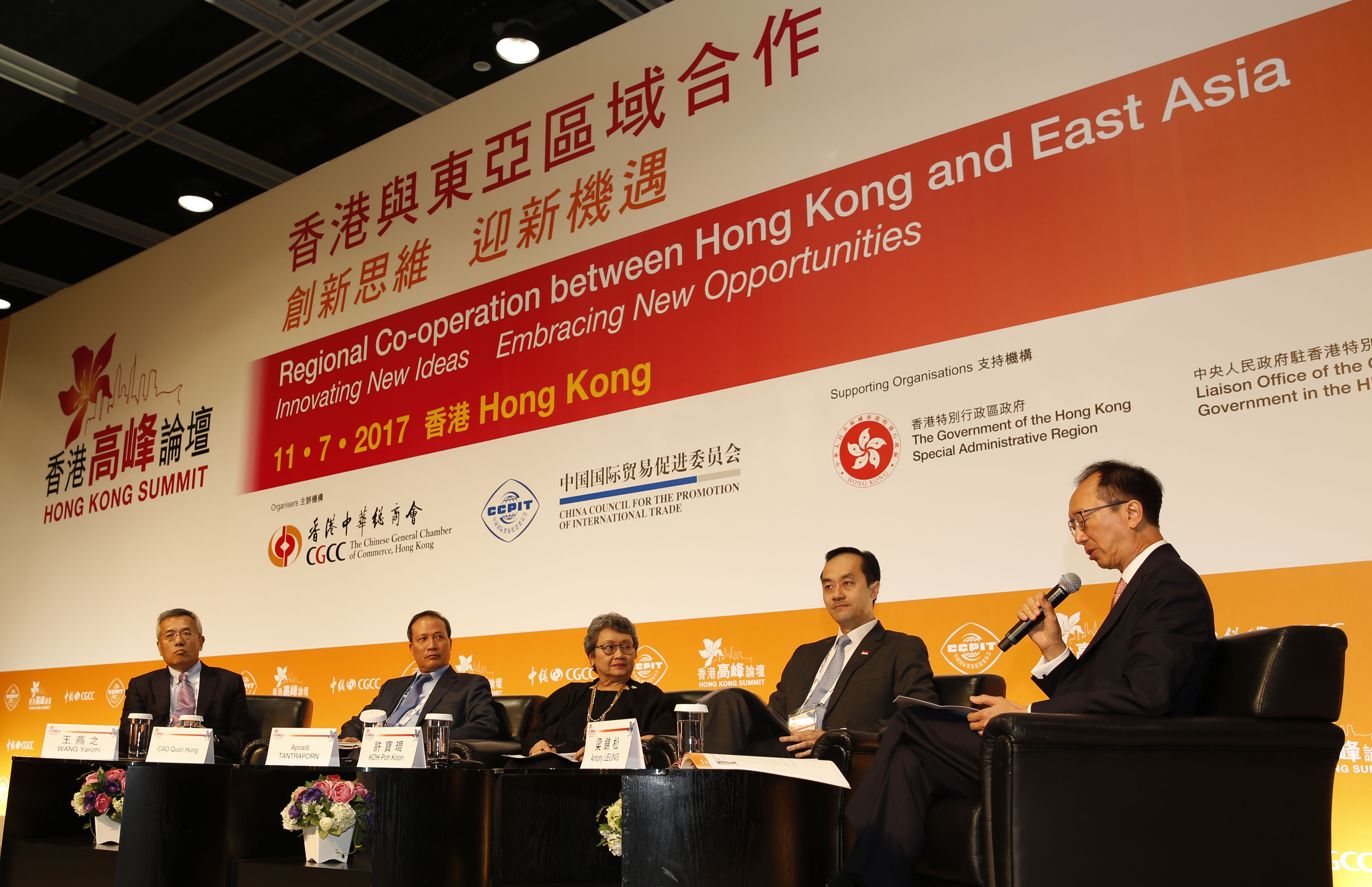

In his welcoming remarks, CGCC Chairman Jonathan Choi said that East Asia’s rapid economic development has made the region a growth driver for the global economy. He pointed out that Hong Kong enjoys unique advantages under the “One Country, Two Systems” principle and can be the “super-connector” under the “One Belt, One Road” (OBOR) initiative.
With the Free Trade Agreement negotiations between Hong Kong and ASEAN entering into the final stages, he said he foresees Hong Kong playing an increasing part in facilitating regional economic and trade co-operation by the time the pact comes into effect.
CCPIT Chairman Jiang Zengwei said he believed that Hong Kong’s location at the centre of East Asia makes it an important gateway between that region and the global market. As a key junction on the 21st-Century Maritime Silk Road, with a high level of openness, diverse culture, international networks and professional services, Hong Kong must seize the opportunities presented and focus on development.
Chief Executive Carrie Lam emphasized that, currently, Asia remains a “strong and powerful growth engine” for the global economy. ASEAN is Hong Kong’s second largest trading partner, and among Hong Kong’s top 20 trading partners, five are ASEAN countries. The OBOR transcends traditional borders and ASEAN countries can play an active role in it. She also believes that Hong Kong must strengthen its position as a facilitator and leverage its unique geographic location, infrastructure, logistics and professional services to become a regional hub for Mainland China and the world.
The ministers of trade and commerce from ASEAN countries and representatives from the Hong Kong SAR government shared their views on economic development in East Asia at a series of morning plenaries, addressed by keynote speakers and followed by topical dialogue.
Ramon M Lopez, The Philippines’ Secretary of Trade and Industry, said he believed that technological developments bring evolutions in traditional business models. He underlined that East Asian economies must work with each other closely, avoiding unhealthy competition, paving the way for mutual developments in a very competitive market environment.
Dody Edward, Indonesia’s Special Advisor to the Minister of Trade on International Relations, suggested that East Asian countries should consolidate their power and face challenges together to achieve a fully integrated regional economy. H.E. Cao Quoc Hung, Vietnam’s Vice Minister of Industry and Trade, said that adequate labour supply and a dynamic consumer market are key ingredients of regional co-operation in East Asia. He also mentioned that the Vietnamese government will focus on the livelihood of people whilst promoting long-term partnerships with other East Asian countries to achieve mutual benefits.
Speakers also shared their views on the OBOR. H.E. Apiradi Tantraporn, Thailand’s Minister of Commerce, hailed the initiative is an important platform to link the region. With Thailand’s strategic position on it, the country will boost investments in ports, airports and other infrastructure to enhance connectivity with neighbouring countries. H.E. Pan Sorasak, Cambodia’s Minister of Commerce, added that the OBOR has great significance in promoting co-operation between Asia, Europe and Africa. He said that his country’s stable economic growth is attracting increasing foreign investment.
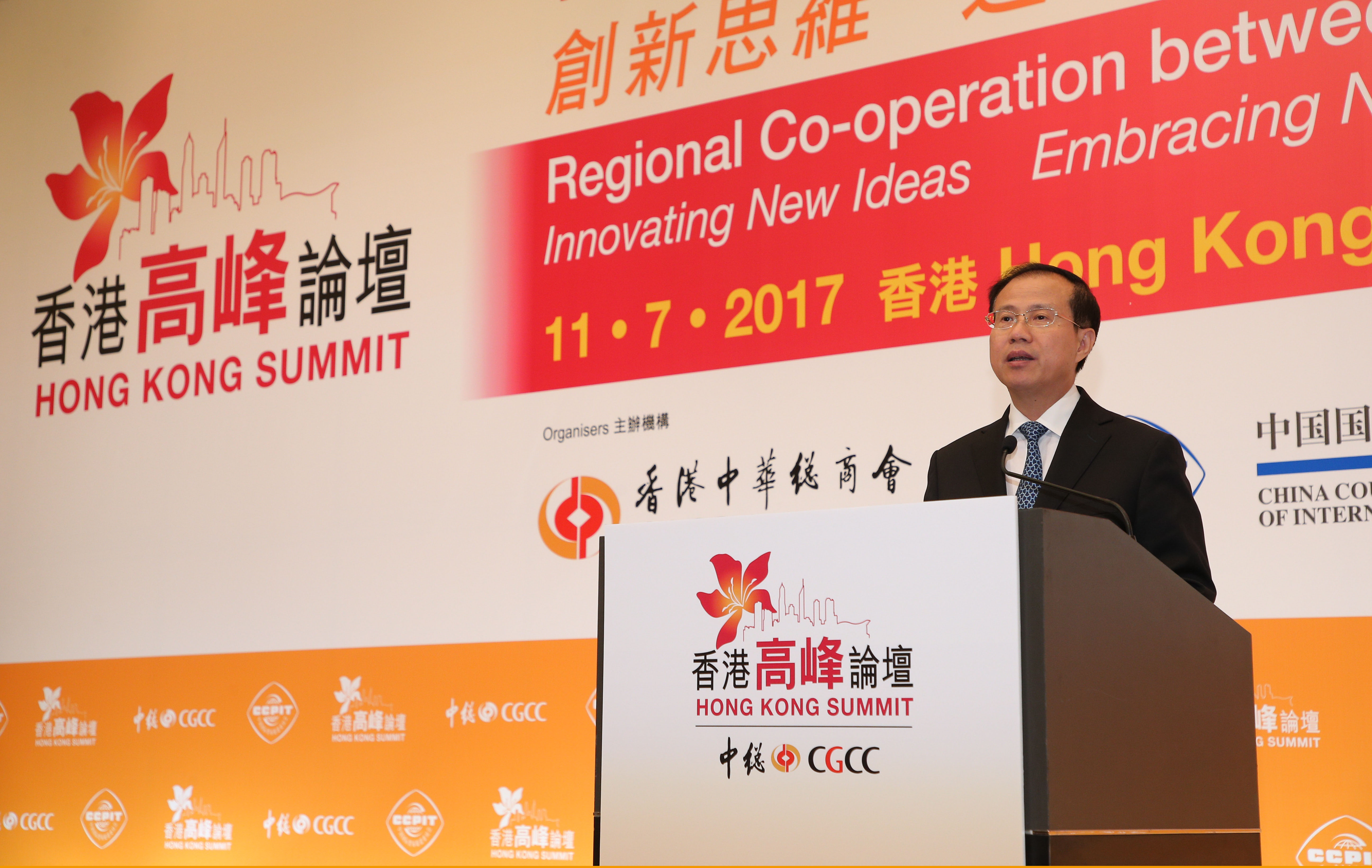
Speakers agreed that deepened co-operation between China and ASEAN will foster the growth of East Asia, and Hong Kong can be the bridge for countries to come together. Mme. Yang Xiuping remarked that this year marks the 50th anniversary of ASEAN, strengthening of the ties to which China has always been committed. Currently, both parties are working on 3,200 collaborations with many more in the pipeline.
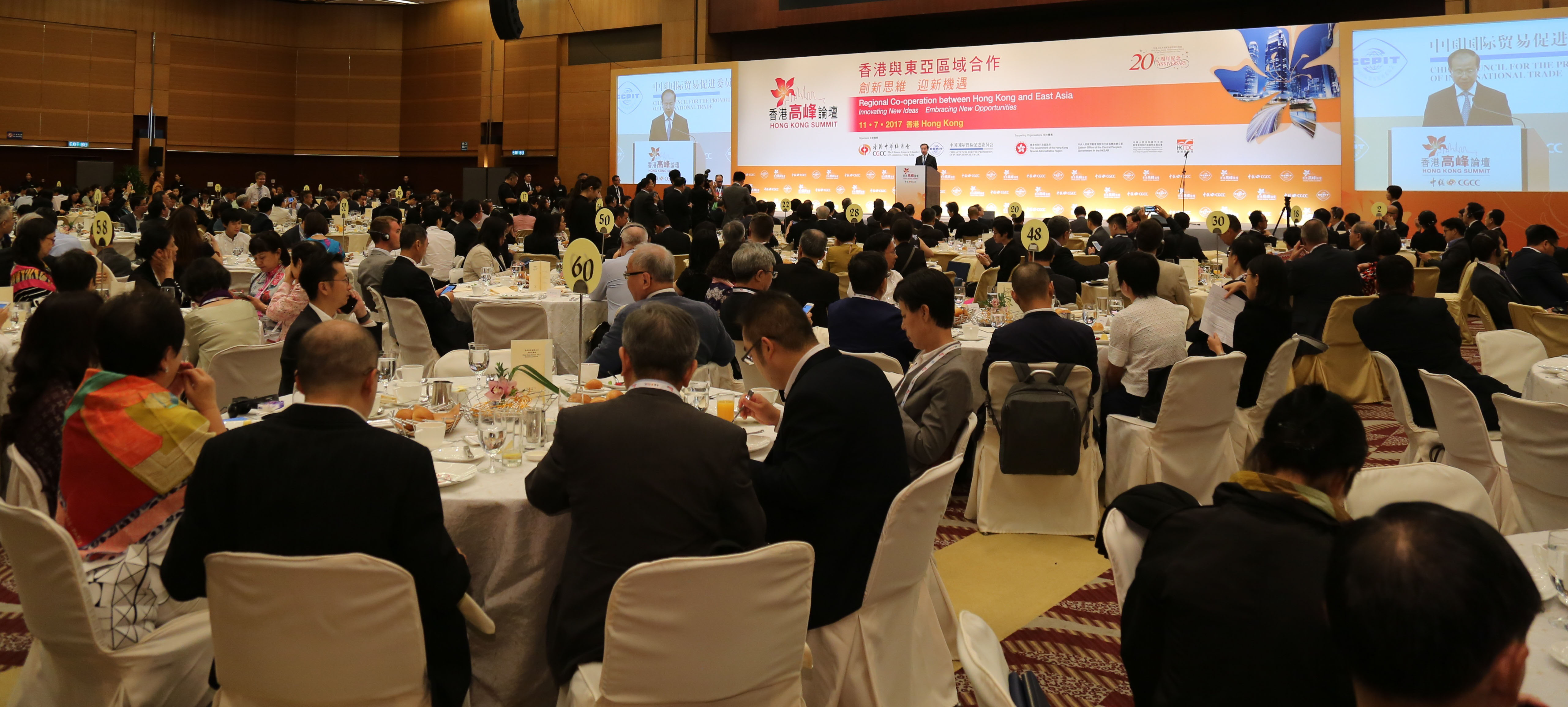
Dr. Koh Poh Koon, Singapore’s Senior Minister of State at the Ministries of Trade and Industry and National Development, felt that Singapore and Hong Kong have many similarities. He urged both of them to use their strengths to promote regional co-operation through bilateral and multilateral free-trade agreements.
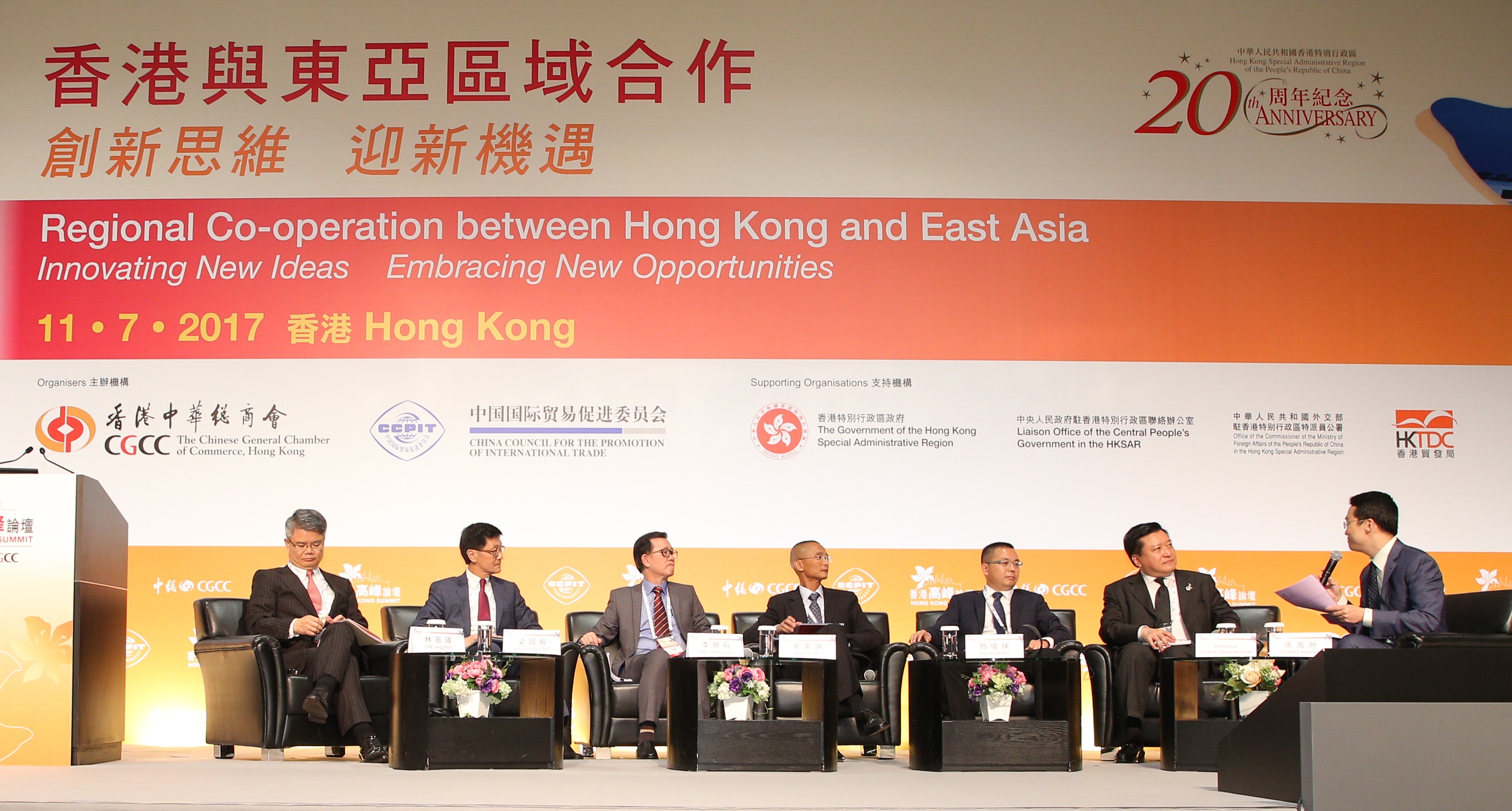
Patrick Nip Tak-kuen, Hong Kong’s Secretary for Constitutional and Mainland Affairs, stressed that Hong Kong’s “One Country, Two Systems” and the establishment of the Guangdong-Hong Kong-Macau Greater Bay Area can link the Mainland with countries along the OBOR, promoting bilateral trade flows. And Wang Yanzhi, Executive Director and President of the Silk Road Fund, also saw the OBOR and the Greater Bay Area as providing enormous opportunities for Hong Kong, stimulating demand for renminbi-related services and adding new impulse to the city’s economic and financial development.
In his speech at the luncheon, Fu Ziying, China International Trade Representative (Ministerial Level) and Vice-Minister of Commerce, said that East Asia is an important force in promoting regional co-operation in the world. In particular, various free-trade areas in the region will stimulate economic development. East Asia is also an important area on the Maritime Silk Road and the OBOR will bring new opportunities to that part of the world and propel regional co-operation to new heights.
He added that as an international financial, trading and freight centre, Hong Kong, with its unique “One Country, Two Systems” principle, can serve as the bridge to link together East Asia. The Ministry of Commerce will enhance communication and co-ordination with the Hong Kong SAR government, he promised, providing assistance in such areas as infrastructural connectivity, FTA negotiations, overseas trade and economic-zone development, as well as contracting overseas projects to enhance Hong Kong’s role under the OBOR.
The Summit’s afternoon session comprised two forums. The first, themed “The Prospect of East Asian Market under New Global Economy” and chaired by Zhang Haizhou, Assistant to the Publisher of and foreign-affairs writer for China Daily Asia Pacific, invited representatives from the financial and infrastructure sectors to discuss the East Asian market from a macro perspective.
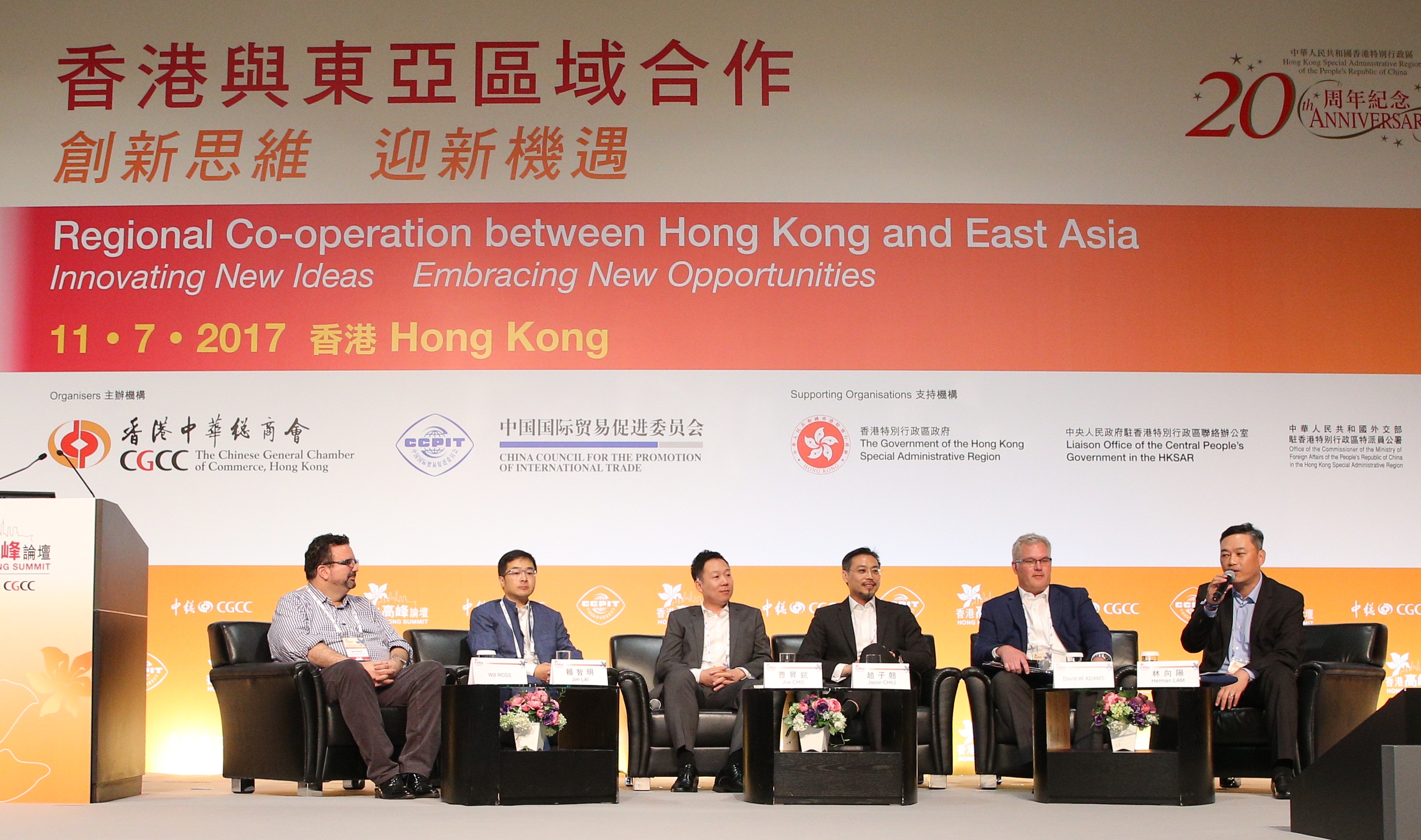
Dr. David Deng, General Manager of the Capital Investment and Management Department of China Merchants Group, said Chinese companies are actively participating in the OBOR by making investments in countries along the Belt and Road. A series of these investments have begun to bear fruit, bringing growth in relevant countries and creating opportunities for domestic and Overseas Chinese businesses.
Patrick Ip, Managing Director of the China-ASEAN Investment Cooperation Fund, mentioned that, over the years, domestic and foreign companies have invested a lot in ASEAN. Chinese companies can act as engineering, procurement and construction, or EPC, contractors for overseas collaboration projects, he said, and further promote business partnerships on a regional basis.
Lincoln Leong, CEO of the MTR Corporation, said that since the reunification of Hong Kong in 1997, Hong Kong’s railway network has continued to expand and the MTR has created a “railway-plus-property” business model. He is optimistic about ASEAN’s growing need for railway infrastructure with the region’s urbanization. Therefore, he said, the MTR will continue to expand — in Hong Kong, Mainland China and overseas.
Lin Jingzhen, Deputy Chief Executive of Bank of China (Hong Kong), advised Hong Kong to explore market opportunities in East Asia, especially with China’s co-operation with ASEAN promoting further internationalization of the renminbi. Five of the 10 ASEAN countries are already conducting renminbi transactions up to a total volume of US$3.4 billion. Singapore and the Philippines have already included the currency in their foreign-exchange trading. In the future, he believes that the renminbi foreign-exchange market can only continue to grow.
Prof. Kriengsak Chareonwongsak, President of the Institute of Future Studies for Development in Thailand, provided an analysis on the prospects of East Asian economies and the role of innovative technologies in industrial developments. While Lee Heng Guie, Executive Director of the Socio-Economic Research Centre of the Associated Chinese Chambers of Commerce and Industry of Malaysia, believed that the OBOR will strengthen co-operation between countries, fostering market developments through innovation and smart technologies.
As the global economy relies increasingly on innovation, the second forum, chaired by Herman Lam, CEO of Hong Kong Cyberport Management, invited leading business figures from emerging industries to discuss the outlook for the digital economy in East Asia.
David W. Adams, CEO of the International Business Unit, SF Express, emphasized that technology is crucial for business upgrading and expansion — for example, to provide a better service, his company innovates B2C goods-tracing systems for its customers. Will Ross, CEO, Lazada Crossborder (Hong Kong), pointed out that Industry 4.0 introduces a new wave of digitalization and companies should work together to seize the business opportunities presented by the OBOR. Jason Chiu, Founder and CEO of Cherrypicks, shared his experience in exploring market opportunities under the OBOR and how the company has been able to make the first move by working with local partners.
Financial technology is one of the key elements of the digital economy. Jim Lai, VP of Tencent, said that financial technology is a rising star in East Asian markets. With the rapid development in electronic-payment techniques, Mainland China is gradually becoming a “cashless society”, illustrating the impact of technology on our daily lives. Joe Cho, Co-founder and Chairman of Marvelstone Group, said that his company has adopted a public-private partnership (PPP) model to provide investment opportunities and match-making sessions for his customers, creating an innovative business environment for emerging industries.
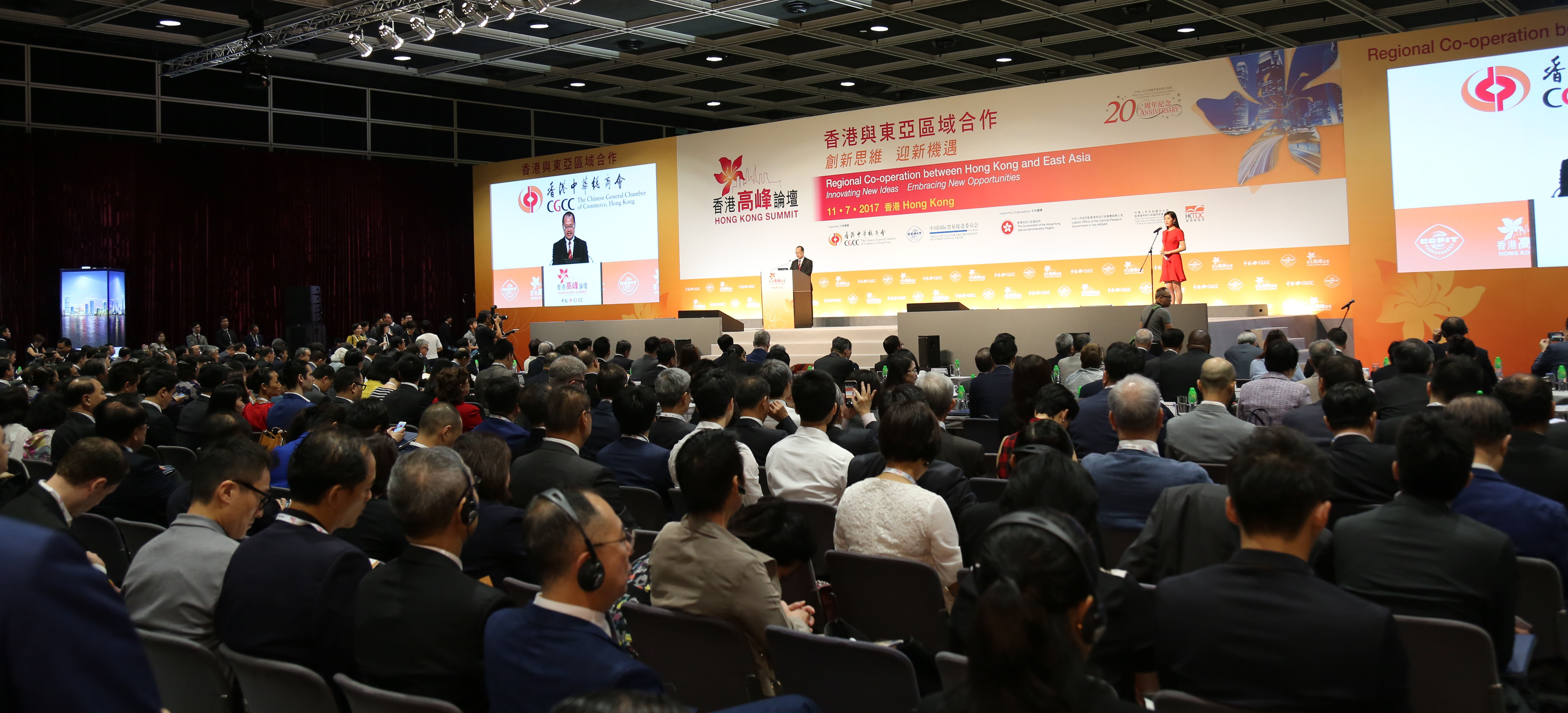
The Summit’s supporting organizations included the Hong Kong SAR Government, the Liaison Office of the Central People’s Government in the Hong Kong SAR, the Commissioner’s Office of China’s Foreign Ministry in the Hong Kong SAR, and the Hong Kong Trade Development Council. It was also supported by government departments, professional, industrial and commercial groups from East Asian countries, as well as domestic and foreign media organizations.
Participants included CGCC Vice-Chairmen Yuen Mo, Ricky Tsang, Dr. Wong Kwok-keung, Brandon Liu, Connie Wong, Tommy Li and Johnny Yu, Life Honorary Chairmen Lam Kwong-Siu and Lam Ming-sum, as well as more than 800 guests including local, Chinese and foreign celebrities, representatives from the business communities, government officials, spokespeople from central government offices and consulates in Hong Kong, heads of business organizations and professional groups, and CGCC members.
A welcome dinner for VIP guests was hosted by the CGCC at the Dynasty Club in Wan Chai on 10th July.
